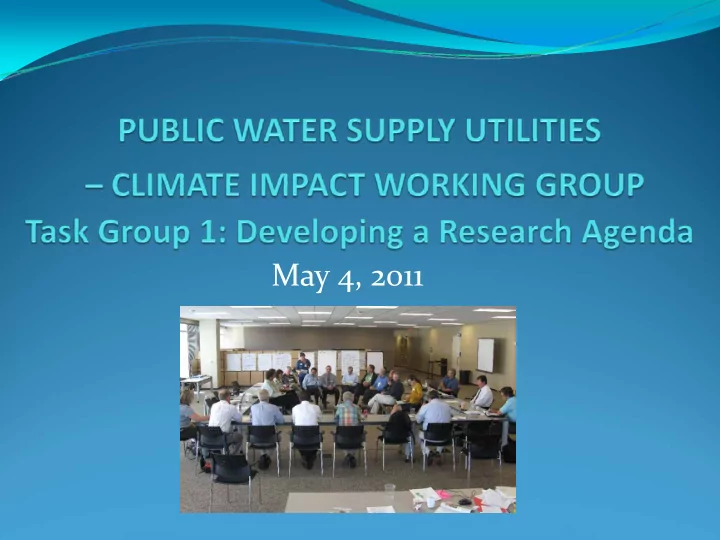

May 4, 2011
PURPOSE � Identify Utility Needs for Climate Change related information � Identify Available Tools to provide Utility needs � Identify ongoing research that will provide Utility needs � Identify Gaps where additional research is needed to provide Utility Needs � Develop strategies to initiate additional research � Pursue federal and state grant funding
Five Climate Research Areas � Temperature Impacts � Rainfall Impacts � Storms/Hurricanes � Sea Level Rise � Carbon Emissions
Hurricane Ike
SEA LEVEL RISE PREDICTIONS Gassman, Broward Cty
VULNERABILITY ANALYSIS � Regional Compact Technical Committee was tasked with analyzing impacts of 1, 2, and 3 foot sea level rise using SFWMD’s inundation grids (50ft cell size); Broward County has completed initial analysis � • Regional Vulnerability Planning Workshop � �Ports/Airports �Railroads � �Wastewater Treatment Plants �WellfieldProtection Areas � �Landfills �Hospitals � �Emergency Shelters �Evacuation Routes � �Schools �Population (2010 BEBR) � �Taxable value of property �Miles of road � �Endangered Species �Future Land Use � �Habitat/Land Use Land Cover
WERF WORKSHOP THE FUTURE OF RESEARCH ON CLIMATE CHANGE IMPACTS ON WATER
WET WEATHER & FLOODING Research Needs Decision Processes 1. Vulnerability of existing infrastructure 2. How to build public support for funding 3. Frequency & magnitude of extreme events 4. Update extreme precipitation & hydrologic data 5. 6. Testing climate models using real data Create federally supported hydrologic design standards 7. Extreme hydrologic events and their impacts 8. 9. Appropriate level of redundancy and safety factors
WATER QUALITY Climate Ready Regulation 1. Trigger Points for Water Quality Planning 2. Quantify Value of Ecosystem Functions 3. Track long ‐ term change in Environmental Drivers & WQ 4. Effectiveness of BMPs under Climate Change 5. Project WQ Changes under Future Climates 6. Models for WQ & climate change decision making 7. When does Climate Change matter to WQ Decisions? 8. 9. Robust Treatment Alternatives & flexible planning for changing climate 10. Quality Consequences of Current Actions
COASTAL ZONE MANAGEMENT Integrated adaptation planning 1. Risk Communication 2. Integration to enhance robustness (Centralized systems 3. connected to each other & small systems) Costs & benefits of adaptation 4. Managing WQ & availability for coastal climate change 5. 6. Integrated adaptation & mitigation in the coastal zone Converting emerging science into design paradigm 7. Institutional management, planning & legal frame works 8. 9. Regional climate change projections 10. Meeting data needs (topographic, HOWL, SLR, etc.)
WATER SUPPLY WORKGROUP Closing the water balance knowledge gap 1. Assessment of the El Nino Southern Oscillation 2. Time & spatial resolution of temperature & precipitation 3. projections Ecosystem services 4. Climate change impacts on aquifers 5. DownscaledData.gov 6. Indirect effects of climate on demand 7. Non ‐ structural approaches to water supply management 8. 9. Decentralized infrastructure effects on resilience 10. Adaptive decision support tools for planning
ENERGY ‐ WATER NEXUS Update 1996 EPRI energy intensity for water & ww 1. Integrate multi ‐ sector basin ‐ wide planning 2. Communicate to stakeholders the need to invest in future 3. reliability of energy & water supply Planning tool for integrated water energy demand 4. Water quantity & quality requirements for energy 5. Energy generation within water & ww utilities 6. Demographic shifts resulting from climate change 7. How water energy nexus is addressed by integrated 8. utilities
WORKSHOP FEEDBACK
Recommend
More recommend